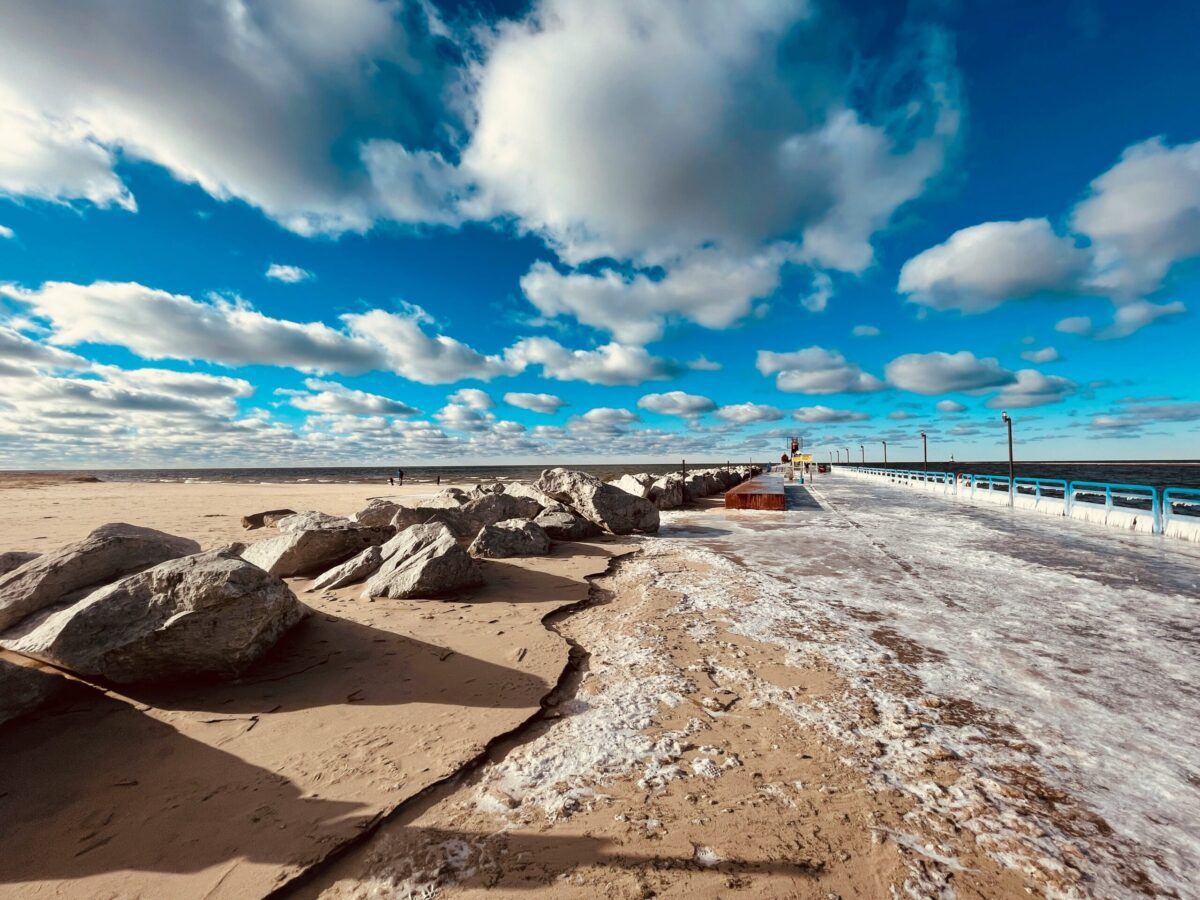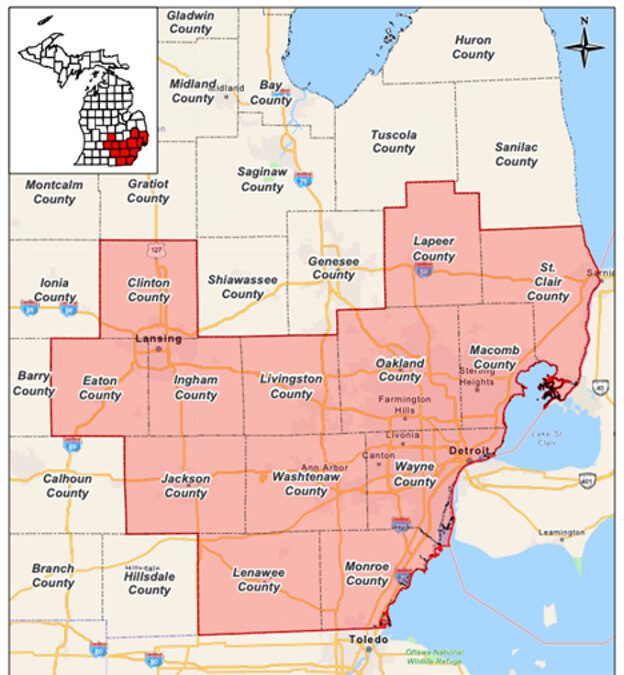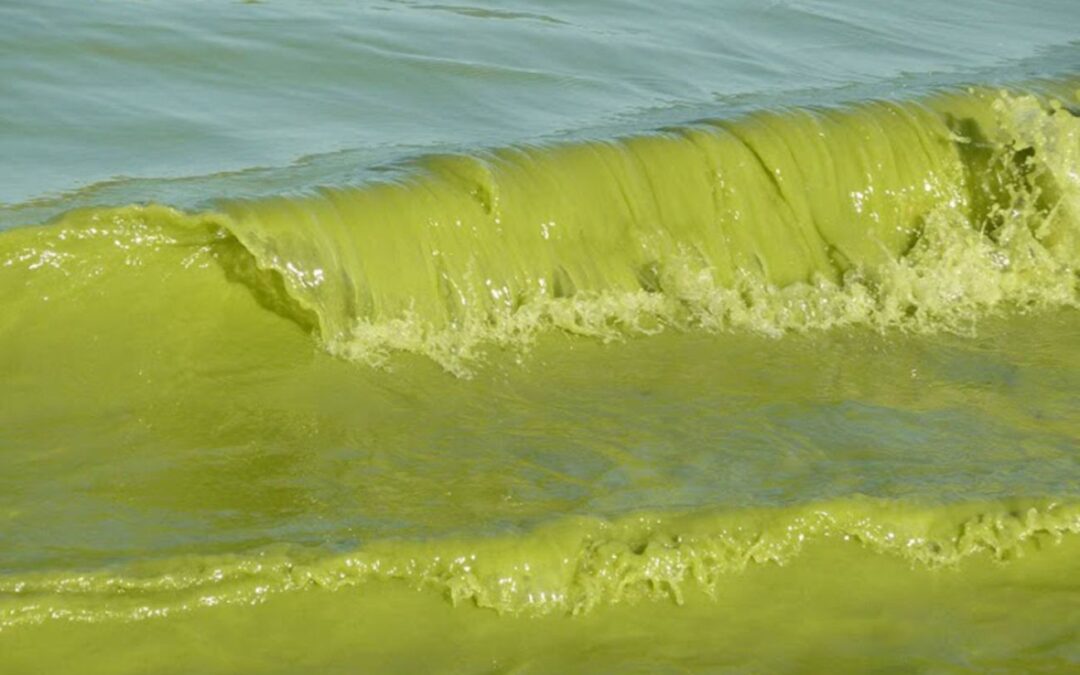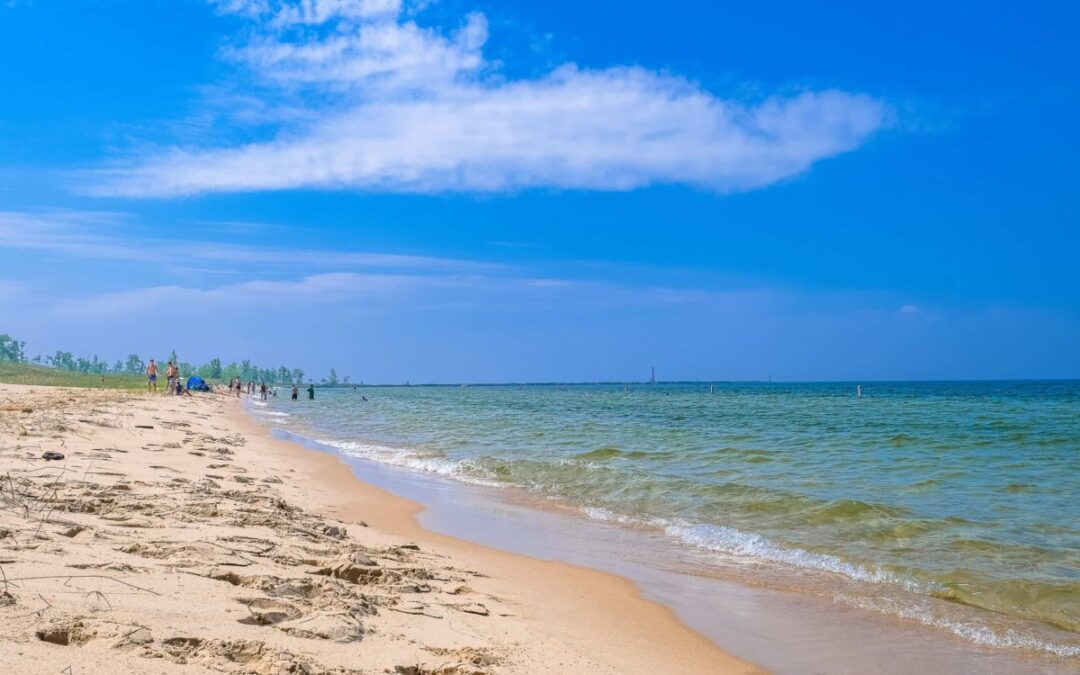
Grand Haven State Park pier and beach, a winter's view. (Dmitry Pavlovsky/Unsplash)
Several Michigan beaches are home to “singing sand,” and while several legends attribute the noise to ghostly causes, there’s a perfectly logical explanation.
I have lived in Michigan my entire life, and yet part of the joy of living in a state as large and wondrous as ours is that there are always new discoveries to be made. For instance, I was today years old when I learned that Michigan is home to a phenomenon known as “singing sand.”
Apparently, there are several beaches in Michigan that boast “singing sand,” a type of sand that is said to whistle, squeak, or otherwise emit noise when moved in a certain way. It sounds a bit far-fetched, but Michigan’s singing sand is very real, and you can hear it for yourself by making a trip to the west side of the state or heading to the Upper Peninsula. Here’s more on what makes up Michigan’s singing sand, and why it’s high time we all faced the music firsthand!
What is singing sand?
The National Oceanic and Atmospheric Administration (NOAA) explains that singing sand occurs as a result of a specific type of sand making up a beach or a dune.
The type of sand that can “sing” requires three specific criteria:
- It has to be made up of round sand grains
- It has to contain silica
- It has to have a certain percentage of humidity
The combination of these three factors working together causes the sand to vibrate in a way that emits a variety of sounds when it moves. Even a small shift can stop the sand from singing. For instance, if the humidity is too high or too low, if silica is removed from the sand, or if the sand grains change shape.
When the conditions are just right, however, the sand will emit noises. The sounds can be anything from squealing, whistling, or booming, adds the NOAA. There are singing sands located across the world, from deserts in Egypt to right here in Michigan.
In large quantities, or on a large scale, sand moving together, like sand rolling down a dune, can produce a very loud sound, a phenomenon that can sound like groaning and bellowing that can be heard for miles. The same sound is made with sand avalanches, as the particles of sand avalanche under gravity and vibrate along the way, causing a noise frequency.
National Geographic explains that explorers from all over the world have documented experiences with groaning sand, and before science, attributed it to everything from evil spirits to ancestors.
For instance, Marco Polo wrote that sand dunes “at times fill the air with the sounds of all kinds of musical instruments, and also of drums and the clash of arms.”
Michigan’s singing sands
Some of Michigan’s famous singing sand sites are:
Bete Grise Beach
This Lake Superior beach is located on the south side of the Keweenaw Peninsula. It’s only one mile long, but the white sand of Bete Grise has a long history as a singing sand beach. The legend about the singing sand of Bete Grise is that a Native American woman lost her lover to the waters of Lake Superior, so the sounds are her calling him from her grief on the shore.
While the legend may be hauntingly beautiful, today, anyone—lost lover or not—can go visit the beach and test the sand for themselves. All you have to do is swirl your hand through the sand, and you can hear it squeak.
Michigan writer and YouTuber Alexis Dahl even traveled to Bete Grise to show exactly how the singing sand of this beach works. In her YouTube video, you can hear the visible squeak of the sand. And if you’re thinking, “Well, that’s nothing, I hear sand squeak all the time,” Dahl also demonstrated how other types of sand do not squeak. So it’s possible that you’ve encountered singing sand before and not realized it!
Muskegon State Park
The three miles of sandy shores and dunes of Muskegon State Park audibly “squeak” when walked across, a sound attributed to the sand’s high quartz content.
“I say it barks!” wrote a commenter on Dahl’s YouTube video. “About 3-5 feet away from the wet sand by the lake, if you shuffle your feet in the dry sand, it will make this sound. More than about 10 to 15 feet away from the wet sand, and it’s quiet.”
Sand Point, Munising
Perhaps unsurprisingly, the Sand Point beach located in Pictured Rocks National Lakeshore Park is also said to have singing sand. The area is known for its high mineral content, which may explain the squeaky sand phenomenon.
“I never realized this was unique to certain beaches,” added another commenter.
Port Crescent State Park
Our family visits Port Crescent State Park in Port Austin, Michigan every year, and it’s just now dawning on me that the sand is, in fact, very squeaky. The area is full of sand dunes, so it makes perfect sense why it would be one of Michigan’s singing sands.
I can’t say I’ve ever heard any widespread or very loud “groaning” from the sand, but it definitely does squeak in your hands!
Grand Haven State Park
Michigan’s west coast rivals any Sunshine State, so there is an abundance of beaches to choose from when you visit. But one of the most beautiful sandy singing sand beaches in Grand Haven can likely be found at the state park. Even just walking across the beaches can emit a whistling sound.
Sand from Grand Haven has even been specifically studied because of its unique mineral content that’s high in quartz as well as magnetite. West Michigan beaches are especially prone to singing sand due to the sand’s natural high quartz content, along with the winds the area receives that have shaped the sand particles down to that necessary round shape that’s just right for “singing.”
It’s actually the quartz rubbing together that produces the sound, a Michigan geologist explained. And the dunes and beaches of Michigan are especially high in quartz because the glaciers that shaped the Great Lakes were from Canadian Rock Shield, which contained a lot of quartz and eventually broke down into sand to form our beautiful beaches.
Other Michigan beaches with singing sand
Any Michigan beach with the right type of sand and humidity could become a singing sand beach, but we also uncovered a few more beaches that are said to contain singing sand. Or, at the very least, squeaky sand.
- Sleeping Bear Dunes
- Ludington State Park
- Petoskey State Park
- Warren Dunes State Park
- Good Harbor Beach
Let us know if you have a secret singing sand beach in Michigan we should add to the list!
This article first appeared on Good Info News Wire and is republished here under a Creative Commons license.
Related: We discovered the perfect family beach resort just 2 hours from Detroit

How Michigan is trying to stop the box tree moth
By Rachel Lewis, Capital News Service LANSING – Boxwood shrubs are popular in Michigan. Gardeners like them because their evergreen foliage brings...

Michigan’s fight against Lake Erie pollution didn’t work. What happens next?
By Emilio Perez Ibarguen, Capital News Service LANSING – Michigan and its neighbors have missed a 2025 deadline to curb the farm pollution that...

Scientists seek sources of fecal pollution that can contaminate rivers, close beaches
By Joshua Kim, Capital News Service LANSING – Water quality experts are using DNA tools to track down contamination responsible for beach closures...

Out of the 103 state parks in Michigan, here are the top 10
Get to know the best state parks in Michigan, which offer an abundance of nature-based activities, from hiking and wildlife viewing to beaches and...

No license needed. How to fish for free in Michigan this week
Grab your fishing rods, sandwiches and, maybe, a few friends for a weekend of free fishing, as the state celebrates its second free fishing weekend...





